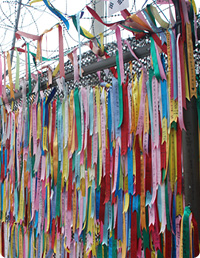Seat In Coach
Panmunjeom (JSA) Plus 9 hours
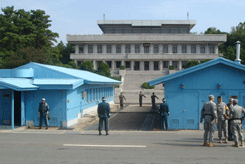
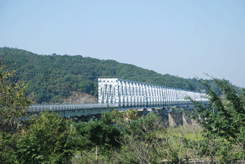
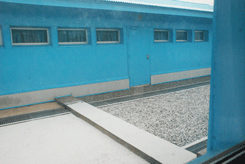
Tour Highlights
• Military Armistice Commission Conference Room • Military Demarcation Line • Blue Bridge • The 3rd Tunnel • Dora Observatory • Dorasan Station • Freedom Bridge
We book this tour through subcontracted out to other tour companies. Therefore the tour quality, conditions and prices by their nature may vary company to company. Please note that the DMZ is a politically sensitive area, and is therefore not always open to tourists.
Arrival complications
Sometimes the unexpected can happen; If you have missed your tour departure, first call the relevant emergency number and speak to our staff who will be happy to help you catch up with the group. Please note that you are responsible for any extra travelling expenses incurred due to you missing your tour’s departure, so please be on time.
Seoul - Panmunjeom (JSA) / The 3rd Tunnel - Seoul (L) 160km
Rules and regulations Every visitor has to use the authorized bus and follow the time and photo regulations. |
| Dress code All visitors to the UNCMACHA (United Nation Command Military Armistice Commission Headquarters Area) must display a neat and presentable appearance. To meet this requirement the following standards apply. The following will not be worn and hair must not be shaggy nor unkempt. * Any clothing with insulting, profane, provocative or demeaning representations * Flip-flop sandals, Shower shoes or opened-toe shoes * Frayed cutoff shorts, gym shorts or shorts that expose the buttocks * Ripped jeans or trousers which expose undergarments or private parts of the anatomy * Shorts or skirts which are shorter than knee length * Any items of outer clothing of a sheer variety or stretch material such as warm-ups pants and leggings * A T-shirt lettered with profanity, Sports uniforms, logos or athletic clothing of any kind * Shirts/tops without sleeves or that expose the midriff and tank tops * Clothing with military-style camouflage, to include hunting apparel * Oversized clothing or excessively baggy/long pants * Leather “Biker” vests and leather riding chaps * Umbrellas (except for during periods of precipitation) * Tripods (except for authorized media) Civilian personnel must be appropriately dressed in casual, semi-formal or formal attire. This includes a dress suit, khakis or jean trousers with a Polo-style or formal collared shirts. Shoes must be closed-toe and can be either low quarters or boots. Backpacks, purses and camera bags are permitted, but must remain in the vehicle transporting the individual into the UNC MACHA (United Nation Command Military Armistice Commission Headquarters Area). Jackets and outerwear must be worn not carried. This document is not meant to cover every possible clothing/appearance situation. In all cases not otherwise specially covered by this policy. The UNCSB-JSA security escort will make decision on acceptability of appearance. |
Panmunjeom tour is one of the best ways to understand the situation, the tension and the grim reality of the South and North Korea division, and your understanding of the recent history of Korea will take on new dimensions. Your tour today will begin by boarding the tour bus at President hotel Seoul that will take you on a day long excursion with other tourists to Panmunjeom, known as JSA (Joint Security Area) in the Demilitarized zone (DMZ). Despite its name, the two sides are separated by a 4km wide buffer of land that stretches the breadth of the Korean peninsula, and is the most heavily armed region in the world: Pillboxes, land mines, barbed wire, and tank stoppers line the entire border, and patrolled by thousands of troops on both sides.
Symbolizing war and peace, division and unification, the DMZ is a place where time has stood still.
Before being allowed to enter the DMZ, you will have to obtain passport and security clearance at the Unification Bridge, the first control line with sentries. From this point on, photography opportunities are limited. After arriving at Camp Bonifas, whose motto “In Front of Them All”, provides some idea as to its position in relation to the border, a soldier comes aboard, and you are under constant guard by soldiers. Before commencing JSA tour, you are briefed at JSA Visitor Center with a 15 minute slide presentation and you must sign a document. The tour of Panmunjeom itself is guided by extremely well informed military personnel who will take you through such sites as MAC Building and the Blue Bridge.
VISITORS DECLARATION VISITORS TO THE JOINT SECURITY AREA ARE REQUESTED TO READ AND SIGN THE FOLLOWING: DECLARATION I have read, understood, and will comply with these instructions. If I am accompanied by minor dependants, minors for who I am responsible for the purposes of this tour, my signature constitutes acceptance of the terms of these instructions on their behalf and confirm not to demand compensation for the damage of body and property of mine and minor accompanied as well. |
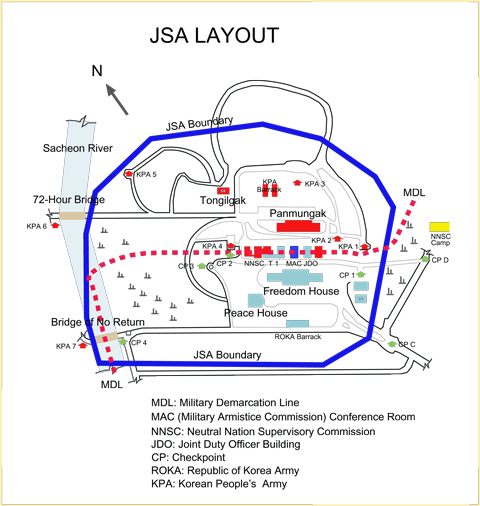 Panmunjeom was once a small farming village, where the Armistice was signed that ended Korean War (1950-1953), and today, South and North forces come face-to-face. The JSA, an outside administrative control of South and North Korea, is an 800 meter wide enclave, an almost circular patch of land. Although an Armistice came into effect in July 1953, the two Koreas are still technically in an active state of war. Tensions between the two countries remain high, and the border is patrolled by thousands of troops on both sides.The UN and North Korea sides each operate 6 guard posts. The JSA has been the site of numerous major events since its establishment in 1953, the first of which was the repatriation of POWs. The UNC returned 75,823 POWs, and the Communists repatriated 12,773 UNC POWs.
Panmunjeom was once a small farming village, where the Armistice was signed that ended Korean War (1950-1953), and today, South and North forces come face-to-face. The JSA, an outside administrative control of South and North Korea, is an 800 meter wide enclave, an almost circular patch of land. Although an Armistice came into effect in July 1953, the two Koreas are still technically in an active state of war. Tensions between the two countries remain high, and the border is patrolled by thousands of troops on both sides.The UN and North Korea sides each operate 6 guard posts. The JSA has been the site of numerous major events since its establishment in 1953, the first of which was the repatriation of POWs. The UNC returned 75,823 POWs, and the Communists repatriated 12,773 UNC POWs. It was also the locale of the return from North Korea into the free world by 82 crew members of the U.S Navy ship Pueblo on December 23, 1968, exactly 11 months after their capture. That day, they walked one by one across the "Bridge of No Return" at Panmunjon to freedom in South Korea. The USS PUEBLO, which was captured by the North Koreans on January 23, 1968, was the first U.S. Navy ship to be hi-jacked on the high seas by a foreign military force in over 150 years.
On August 18, 1976, the cold calculating aggression of the North Korean communists reached shocking proportions when two American military officers were hacked to death in cold blood with axes in a surprise attack here when United Nations Command work party was pruning a large poplar tree obscuring visibility between two UNC checkpoints. During the fight, Joint Security Force (JSF) company commander Capt. Bonifas of the US Army and Lt. Barrett were killed by a North Korean guard. Prior to the axe murder incident, the entire area was neutral, where members of either side possessed the freedom of movement within the JSA. The U.S. commanding post in Korea placed its troops on combat-ready status DEFCON 3. In the meantime, the U.S. began to relocate a fighter-bomber squadron and a marine unit from Okinawa to Korea, while ordering 2 carriers, Ranger and Midway, to move into Korean waters. At 7 A.M. on August 21, the UN commanding post, after placing its troops on a status of imminent war conditions DEFCON 2, finished the tree-trimming work. On August 21, North Korean leader Kim Il-sung, as the supreme commander of the North Korean People's Army, sent a written apology to the head of the UN command. The talks between the UN command and North Korea began from September 1 and agreed to draw a line dividing the JSA into the south and north, and to take independent responsibility for maintaining their respective area.
On November 23, 1984, a Soviet journalist named Vasily Matusak was on a tour from the other side and he defected to the South. Thirty Korean People's Army troops chased him across the Military Demarcation Line and there was a 40-minute firefight that ended with one Southern and three Northern soldiers were killed.
The 2018 inter-Korean summit took place on 27 April, on the South Korean side of the Joint Security Area, between Moon Jaein, President of South Korea, and Kim Jongun, Chairman of the State Affairs Commission of North Korea. It was the first time since the end of the Korean War in 1953 that a North Korean leader entered the South's territory; President Moon also briefly crossed into the North's territory. The summit was focused on Denuclearization, Establishment of Peace, and Advancement of Inter-Korean Relations.
As you approach JSA, you will notice Peace House providing facilities for non-military and civilian meetings between South and North Korea, and Freedom House for South-North contacts, meetings and Liaison Office.
Before entering the Military Armistice Commission Conference room, you will see the security forces from the both sides staring each other down across the border. The South Korean troops wear helmets, black shades, gray shirts and green army pants. Each stands in Taekwondo stance with clenched fists, and they are taut like high-tension wire. You will look on in fear and awe of the closest North Korean border. While inside the Military Armistice Commission Conference Room where a line marking the border runs across the floor and right down the middle of the conference table, experience infamous border that divides two Koreas. The neat lines of microphones and, outside, the low concrete bar mark the exact position of the line of demarcation. Across the border, Panmungak of North Korea stands about 80m north of South Korean Freedom House. The building serves as offices for North Korean guards and is also used to hold propaganda activities.
You will tour the Blue Bridge where two leaders took a meeting at the Inter-Korean Summit and the pine tree that was jointly planted along a path on the southern side of the Military Demarcation Line. After shoveling some soil from both sides onto the newly planted tree, the two leaders watered it with water from the rivers in the South and the North.
There are two heavily guarded villages in the DMZ, Daeseongdong farming community in the south and Gijeongdong propaganda village in the north, which face each other across the minefields. Across the MDL in Gijeongdong, you will see North Korean flag that weighs 270kg (30m x 14m) hangs on a 160m-tall jamming tower.
In 1981, the South Korean government built a 99.8m tall flagpole with a 130kg (18m x 12m) South Korean Flag in Daeseongdong. The North Korean government responded by building what was then the tallest flagpole in the world, in what some have called the "flagpole war”.
The flagpole was superseded as the world's tallest, following the construction of the flagpole in Baku’s National Flag Square at 162m. Both flagpoles were topped in 2011 by the Dusanbe Flagpole in Tajikistan at 165m. Despite the turbulent past, both sides continue to meet at the Conference Room. Today, you will be profoundly impressed at the stark reality and immense tragedy of divided Korea.
With time for lunch outside DMZ, the 3rd tunnel tour continues.
The 3rd Tunnel Tour
Rules and Regulations |
 Imjingak is the furthest north point in the area than you can go freely. It is a park with an array of monuments and statues that speak to the Korean War (1950-1953).
Imjingak is the furthest north point in the area than you can go freely. It is a park with an array of monuments and statues that speak to the Korean War (1950-1953).One such monument is Mangbaedan, a memorial site where displaced North Koreans pray for their ancestors. Near Mangbaedan is the Freedom Bridge, and was an important site where 12,773 prisoners of war returned to freedom. This short, sturdy wooden structure ends at a barricade, which embodies the North. The altar and the bridge now serve as places of remembrance for displaced families, and the millions of bright colored ribbons tied to the fence have messages of hope, dreams and wishes for unification between South and North Korea.
You can also see a derelict locomotive engine shot full of bullet holes and its bent wheels - not particularly special in any way other than it shows the destruction of war. Having been left in the DMZ since bombs derailed it during the Korean War; it was cleaned up and moved here in 2009. There is a collection of stones from 86 battlefields in 64 countries known as the Peace Stones that have witnessed suffering and grief of war.
Then, you board a tour bus to continue on to the Demilitarized Zone which straddles the South and North Korean border. A 4km wide buffer of land stretches the breadth of the Korean peninsula. Total 1,292 signboards of the Military Demarcation Line were established and 696 of which are controlled by the U.N. Forces while 596 are under the control of North Korea and China. Before being allowed to enter the DMZ, you will have to obtain passport and security clearance at the Unification Bridge, the first control line with sentries and photo opportunities will be limited.
The 3rd tunnel is one of the four infiltration tunnels dug by the North to facilitate an invasion of the South. Discovered on October 17, 1978, it is a 1,635m long, 2m high and 2m wide, and could have accommodated 30,000 soldiers per hour in what was apparently designed for a surprise attack on Seoul. The tunnel runs through bedrock at a depth of about 73m below ground; 435m of which are found in the South over the Military Demarcation Line (MDL). It is designed at a three thousandth angle with northern side lower than southern side, so that water does not stagnate inside tunnel. After ducking and crouching your way 265m through the tunnel, you will reach one of the cement walls with iron door near the MDL that will prevent you from going any further north and where you peep through a small window at a barricade, just to see another barricade in the distance. You can clearly see the drill marks for dynamite all pointing toward the South. This finding, along with other clues, clearly affirmed their construction.
After exploring the tunnel, climb back out of the tunnel and make your way to the DMZ Exhibition Hall for a unique insight into the Korean War and model of soldiers digging the tunnel, equipment used by the North, model of Panmunjeom (Joint Security Area), a timeline of major North Korean provocations over the South since 1950, and photographs of the historical events about Korea's division. And time for a short video including old film that takes you back in time to the signing of the armistice and the creation of the DMZ.
Next stop is Dora Observatory. As you approach, you will see an eye catching slogan printed up on the wall "End of separation, beginning of unification". The observatory looks across the land north of Demilitarized Zone, the road and train track stretched side by side ahead into the North Korea, bare mountains, treeless hills, watchtower, North Korean propaganda village and Kaeseong Industrial Complex. Financed and managed for the most part by South Korea, the project was launched in 2004 as a gauge of the volatile security situation on the peninsula, and South Korean companies could manufacture their products using North Korean labour. It once employed 803 South Korean and 54,764 North Korean workers, but this jointly run Industrial complex is totally shutdown as of February 10, 2016 in response to North Korea's nuclear test.
You will also tour the Dorasan Station, the last railway station in South Korea before the North Korean border. This station drew world attention when President Bush visited here in February 2002. On December 11, 2007, freight trains began traveling north past this station into North Korea, however, on December 1, 2008, the North Korean government closed the border crossing. The station is heavily guarded and signs are up showing the future destination of Pyeongyang in North Korea. The milepost "Seoul 56km/Pyeongyang 205km" still stands from the time when trains could still cross past this station and into North Korea.





